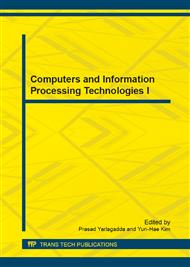p.711
p.717
p.721
p.725
p.729
p.735
p.741
p.747
p.753
Extracting Geometric Edges from 3D Point Clouds Based on Normal Vector Change
Abstract:
Normal vector of 3D surface is important differential geometric property over localized neighborhood, and its abrupt change along the surface directly reflects the variation of geometric morphometric. Based on this observation, this paper presents a novel edge detection algorithm in 3D point clouds, which utilizes the change intensity and change direction of adjacent normal vectors and is composed of three steps. First, a two-dimensional grid is constructed according to the inherent data acquisition sequence so as to build up the topology of points. Second, by this topological structure preliminary edge points are retrieved, and the potential directions of edges passing through them are estimated according to the change of normal vectors between adjacent points. Finally, an edge growth strategy is designed to regain the missing edge points and connect them into complete edge lines. The results of experiment in a real scene demonstrate that the proposed algorithm can extract geometric edges from 3D point clouds robustly, and is able to reduce edge quality’s dependence on user defined parameters.
Info:
Periodical:
Pages:
729-734
Citation:
Online since:
June 2014
Authors:
Price:
Сopyright:
© 2014 Trans Tech Publications Ltd. All Rights Reserved
Share:
Citation:


